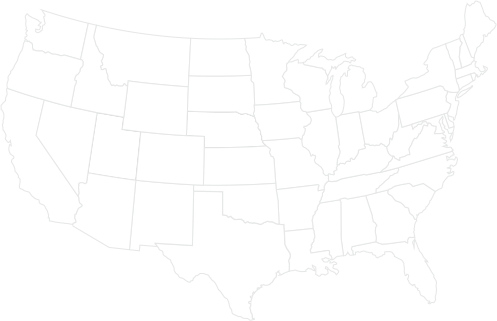Avoiding Gossypol Toxicity While Feeding Whole Cottonseed
• Posted in Articles
Many beef and dairy farmers incorporate whole cottonseed into their cattle rations because of its great nutritional profile as a balanced source of fat, protein and fiber.1 Nutritionists and qualified cottonseed sellers are great resources for determining the best way to fit whole cottonseed into a cattle ration to maximize the benefits.
One thing that farmers should learn about before feeding whole cottonseed is the potential for gossypol toxicity. This is a rare complication that can occur when whole cottonseed is fed above the recommended rate of 0.5% of bodyweight for mature cows or 0.33% for weaned calves per day.2 When rations are well-managed, gossypol toxicity shouldn’t cause any issues for cattle with well-developed rumens.2
What is gossypol?
Gossypol is a naturally occurring toxin found in the cotton plant that protects it from insects.2 Ruminant animals like cattle can detoxify gossypol via microorganisms in the rumen that bind to the toxin so it can’t be absorbed.2
When fed at high levels, cattle can experience gossypol toxicity, which primarily causes heart damage and can sometimes lead to death.3 A 1975 study observed a 700-cow dairy herd in Alabama and found that approximately 25 cows displayed symptoms gossypol toxicity resulting from consuming large amounts of cottonseed meal as the sole source of protein.3 Symptoms included depression, loss of appetite, anorexia, labored breathing and red blood cell fragility.
When fed above the recommended level, gossypol can also have a temporary impact on bull fertility.4 Young, developing bulls appear to be more affected than mature bulls.4 However, feeding whole cottonseed at the recommended level is unlikely to produce any negative effects on reproduction or general health.3
Lower the risk of gossypol toxicity
There are several things farmers can do to lower the risk of gossypol toxicity and reap the many benefits from feeding whole cottonseed.
- Avoid feeding whole cottonseed to young calves. Once the rumen has developed, cattle can detoxify some gossypol. Farmers should avoid feeding whole cottonseed to young calves until they develop their rumen, usually at 4 months of age.2
- Do not feed above the maximum recommended ration levels. The maximum ration levels for whole cottonseed are 0.5% of body weight (about 5 lbs.) for mature cows and 0.33% of body weight (about 1.5 lbs.) for weaned calves.2
- Avoid free-choice feeding and consider offering a mixed ration. Cattle sometimes prefer whole cottonseed over other components of the ration, which can lead to overconsumption.
“We don’t recommend free-choice feeding because some cows will eat a lot more than others, and calves would be able to eat a lot if they want to,” said Dr. Matt Poore of NC State University.
A 1998 trial conducted in Georgia demonstrated that when mature cattle were fed free-choice whole cottonseed, their intake ranged from 4 to 11 lbs. per head per day, which is problematic both because of the risk of gossypol toxicity and the elevated fat consumption.5 To avoid this outcome, farmers should consider offering a mixed ration rather than alternating individual ingredients.
“Alternating individual ingredients rather than mixing them allows animals to eat more or less of feeds they either like or don’t like,” Poore said. “In these situations, it is better to feed a mixed ration. For supplementing cows on pasture, it is a different situation because you are feeding a limited amount.”
- Allow all animals access to the cottonseed at once. Poore recommends mixing whole cottonseed with grain and spreading it out on sod, hay or a feed bunk to ensure all animals have access to it at once.4 “The key is to spread it out so all animals can eat at the same time,” Dr. Poore said. “You might think that baby calves would have a problem with that, but the cows eat the seed so fast that they don’t have the chance to get much.”
- Avoid feeding bulls whole cottonseed 60 to 90 days before the start of breeding season. Whole cottonseed fed at the correct levels is unlikely to produce a negative effect on bull fertility, but because bull fertility is so important to profitable beef production, bulls should not be fed whole cottonseed 2 to 3 months before breeding season.2
- Know the difference between whole cottonseed and cottonseed meal. Although whole cottonseed has higher amounts of gossypol than cottonseed meal, the gossypol in cottonseed meal is more readily available.6 Processing cottonseed meal ruptures some of the pigment glands, which releases the gossypol. When fed at high levels, this has the potential to do more harm than the gossypol in whole cottonseed.4
- When fed appropriately, whole cottonseed shows little risk of gossypol toxicity and offers many benefits to dairy cows, beef cows or feeder animals. Whole cottonseed’s balanced composition of fat, protein and fiber provides a triple nutrient punch cattle need to be healthy and productive. Trial after trial demonstrates that whole cottonseed increases milk production and leads to higher butterfat when added to dairy cow rations.7 It also has been shown to be beneficial to beef cattle, providing an effective source of nutrition without any adverse effects on performance or carcass characteristics.8
With these tips, you can feel confident you’re giving your cattle all the powerful nutritional benefits whole cottonseed has to offer while eschewing the negative consequences of gossypol toxicity or reduced fertility. For more information about whole cottonseed, click here.
1 Kellogg, D.W., Pennington, J.A., Johnson, Z.B. and Panivivat, R. (2001). Survey of management practices used for the highest producing DHI herds in the United States. J. Dairy. Sci. Vol. 84, Supplement, E120– E127. doi:10.3168/-jds.S0022-0302(01)70206–8.
2 Myer, R.O., McDowell, L.R. (2003). Potential for gossypol toxicity when feeding whole cottonseed to beef cattle. This document is AN130, one of a series of the Animal Science Department, Florida Cooperative Extension Service, Institute of Food and Agricultural Sciences, University of Florida. https://edis.ifas.ufl.edu/publication/AN130 .
3 Poore, M., Rogers, G. (1998). Potential for gossypol toxicity when feeding whole cottonseed. Department of Animal Science, NCSU. https://projects.ncsu.edu/cals/an_sci/extension/animal/nutr/mhp95-1.htm.
4 Stewart, L. and Rossi, J. (2010). Using cotton byproducts in beef cattle diets. Bulletin 1311. The University of Georgia and Ft. Valley State University, the U.S. Department of Agriculture and counties of the state cooperating. http://cottonpickin.tamu.edu/General%20Production/Georgia%20Cotton%20Byproducts%20for%20Beef%20Cattle%20B%201311_2.pdf.
5 Jacobs, L., Mullenix, K. and Brown, S. (2019). Farming whole cottonseed use in beef cattle diets. Alabama A&M and Auburn Universities Extension. https://www.aces.edu/blog/topics/beef/whole-cottonseed-use-in-beef-cattle-diets/.
6 Ely, L., Guthrie, L. (2012). Feeding whole cottonseed to dairy cows and replacements. University of Georgia Extension. https://extension.uga.edu/publications/detail.html?number=SB59&title=Feeding%20Whole%20Cottonseed%20to%20Dairy%20Cows%20and%20Replacements.
7 Bernard, J.K. (1999). Performance of lactating dairy cows fed whole cottonseed coated with gelatinized cornstarch. J. Dairy. Sci. Vol. 82, no. 6, pp. 1305–1309., doi: https://doi.org/10.3168/jds.S0022-0302(99)75353-1
8 Warner, A.L., et al. (2020). Effects of utilizing cotton byproducts in a finishing diet on beef cattle performance, carcass traits, fecal characteristics, and plasma metabolites. Am. Soc. of Anim. Sci. Vol. 98, issue 2, doi:10.1093/jas/skaa038.

